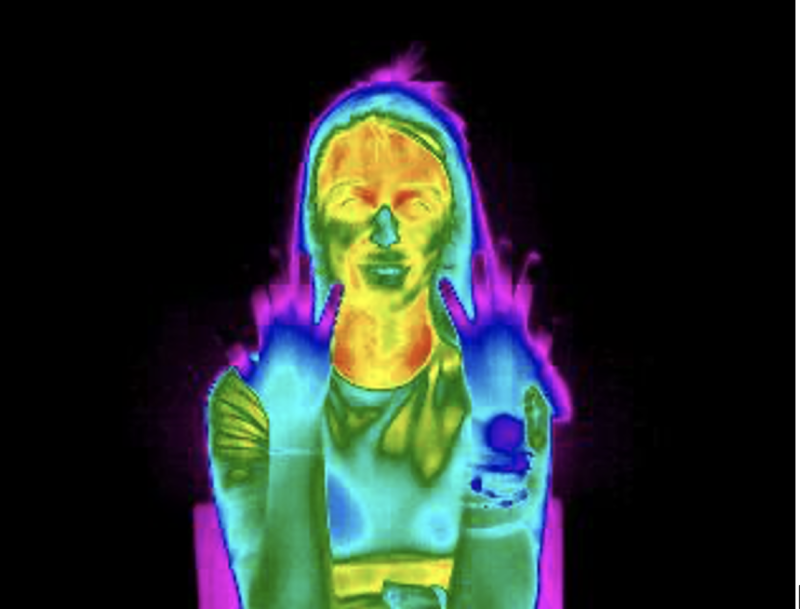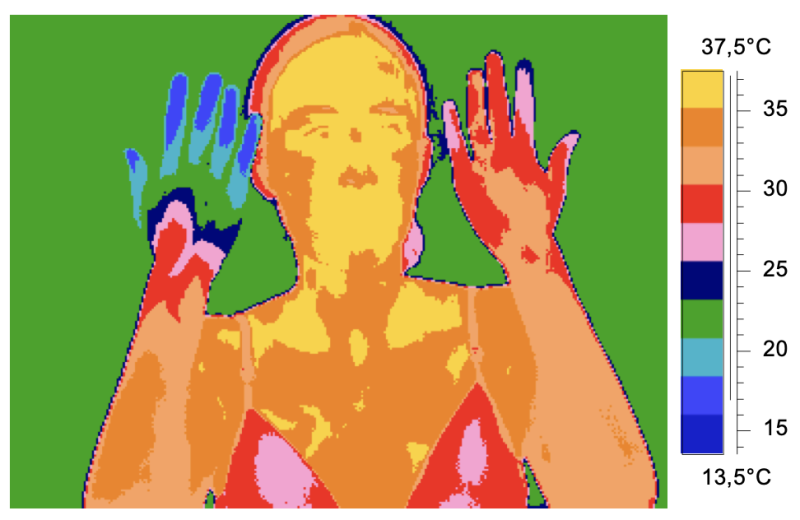

Jesús Fernández Gómez, Emilio Gómez Milán, Oscar Iborra and Vicente Caballo, researchers at CIMCYC, together with the research team led by Germán Gálvez from the University of Temuco in Chile (and University of Salamanca) and with the collaboration of Javier Albayay from the University of Trento (Italy), have developed a thermographic model to evaluate social anxiety, since until now there was no objective psychophysiological index of social anxiety. The model has been published in the journal Anxiety Stress Coping.
Five social tasks were developed using a subjective social anxiety questionnaire (SAQ by Caballo et al, 2015) as a reference. Participants with high and low social anxiety, performed those tasks: looking a stranger in the eye while telling him/her about their CV; having social interaction with an attractive stranger who shows interest in them (an actor/actress); defending that they are the best candidate in a job interview; failing a general knowledge exam (which is difficult but reported to be simple); and, finally, complaining about a product in poor condition to an uncooperative salesperson.
During the performance of the above tasks, participants' body temperature was recorded with a high-resolution thermographic camera. Thermal changes (of at least 0.3ºC) were studied in different body regions, especially facial regions: forehead (thermal change has been linked to cognitive effort), cheeks (thermal change has been associated with emotional regulation) and the tip of the nose (thermal change has been associated with autonomic activation, its thermal rise with parasympathetic dominance and its fall with sympathetic dominance).
The main result of the study was that across tasks, participants with high social anxiety showed nasal thermal rise compared to participants with low social anxiety, who tended to show thermal descent in the nasal tip. Parasympathetic dominance in adverse situations has been linked in previous studies to the freezing response. The most discriminative task for classifying social anxiety was looking a stranger in the eye, with 70% accuracy and 30% false alarms.
This research opens the door to establish a procedure to discriminate different types of anxiety objectively by using thermography .
Reference:
Fernández, J., Albayay, J., Gálvez-García, G., Iborra, O., Huertas, C., Gómez-Milán, E., & Caballo, V. E. (2023). Facial infrared thermography as an index of social anxiety. Anxiety, Stress, & Coping, 1-13. https://doi.org/10.1080/10615806.2023.2199209

